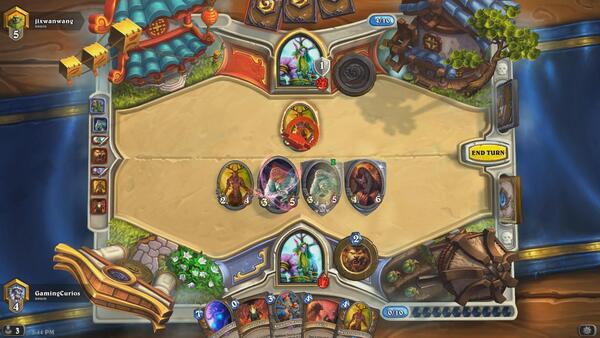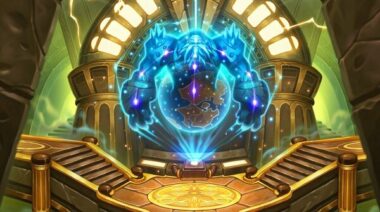Hearthstone is a digital collectible card game (CCG) developed by Blizzard Entertainment. It combines strategic deck building with real-time play, offering endless possibilities and competitive play for newcomers and veterans alike. The key to excelling at Hearthstone lies in mastering a few critical areas: understanding the game mechanics, selecting the right cards, creating powerful synergies, and constantly adapting to the evolving meta. This guide will provide step-by-step advice on how to improve your gameplay and dominate the competition in Hearthstone.
H2: How to Understand Hearthstone’s Core Mechanics
Before you can excel in Hearthstone, it’s essential to understand the game’s basic mechanics.
H3: Mana and Card Economy
Hearthstone operates on a mana-based system, where players start with 1 mana on turn one, increasing by 1 mana each turn until they reach the cap of 10. Efficient use of mana is critical to success. Learning to balance your deck with cards that match your available mana each turn helps optimize plays and prevent wasted turns.
H4: Tempo and Board Control
Tempo refers to how well a player can control the board and momentum in a match. Board control means dominating the board with stronger minions and removal spells than your opponent. Maintaining tempo by summoning powerful minions early and removing your opponent’s key threats ensures that you maintain the advantage throughout the game.
H2: How to Build a Competitive Deck
Deck building is the foundation of a winning strategy in Hearthstone. Understanding the structure of your deck and the synergy between cards will lead to consistent wins.
H3: Card Synergies and Combos
Every Hearthstone deck should focus on specific synergies and combos. For example, in a Shaman deck, combining “Totem Golem” with “Flametongue Totem” can give you the board control needed to snowball. Similarly, a Mage deck using “Frostbolt” and “Ice Lance” can deal massive burst damage.
H4: Balancing Aggro, Control, and Midrange
Decide on a playstyle: Aggro decks focus on fast, aggressive minions, Control decks prioritize board control and late-game dominance, while Midrange decks strike a balance. Knowing your playstyle will help you choose the right cards to include in your deck.
H2: How to Choose the Right Class
In Hearthstone, each class has unique cards and abilities, making the choice of class a pivotal decision when crafting a deck.
H3: Class Strengths and Playstyles
Choosing the right class requires understanding their strengths. Mage excels in spell-heavy control decks, while Hunter shines in aggressive, minion-heavy strategies. Priest is perfect for healing and late-game power. Your chosen class should match your preferred playstyle.
H4: Hero Powers and Their Importance
Each class comes with a distinct Hero Power. Understanding how to utilize your Hero Power effectively is key. For example, Warrior’s Armor Up can help you survive in a control matchup, while Druid’s Shapeshift offers both attack and defense.
H2: How to Master the Mulligan Phase
The Mulligan phase occurs at the beginning of each game, where you have the chance to swap cards from your starting hand. Mastering this phase can determine your chances of success.
H3: Prioritizing Early Game Cards
When deciding which cards to keep, focus on low-cost minions and spells that help establish early board control. Keeping cards like “Northshire Cleric” (Priest) or “Fiery War Axe” (Warrior) ensures you can contest the board early on.
H4: Mulligan Based on Opponent’s Class
Tailor your mulligan strategy based on your opponent’s class. For example, if facing an Aggro Hunter, prioritize defensive options. Against a Control Mage, keep your mid-game minions to maintain board presence.
H2: How to Control the Board
Maintaining board control is key to winning games, as it allows you to dictate the flow of the match and restrict your opponent’s options.
H3: Trading Minions Efficiently
One of the core skills in Hearthstone is learning when to trade minions. For example, using a smaller minion to eliminate a more significant threat keeps you ahead on board presence while conserving your resources for future plays.
H4: Using AoE Spells for Maximum Impact
Area-of-effect (AoE) spells such as Consecration (Paladin) or Flamestrike (Mage) can clear large groups of enemy minions, resetting the board in your favor. Timing these spells correctly can drastically swing the game’s momentum.
H2: How to Manage Card Draw and Resources
Efficient card draw is critical for maintaining a healthy hand throughout the game. Running out of cards leads to fewer options and reduced flexibility.
H3: Utilizing Card Draw Mechanisms
Certain classes have strong card draw mechanics, such as Arcane Intellect (Mage) or Divine Favor (Paladin). Including these cards in your deck helps prevent running out of resources during the match.
H4: Managing Fatigue in Long Matches
In extended control matchups, running out of cards can result in fatigue damage. Ensure you balance aggressive plays with long-term survival strategies, especially in control mirrors.
H2: How to Adapt to the Meta
The Hearthstone meta is ever-changing, especially with each new expansion or balance patch. Learning how to adapt your deck to the current meta is crucial for maintaining success.
H3: Staying Up-to-Date with Meta Changes
To stay competitive, you need to monitor changes in the meta. If Aggro decks are prevalent, tech in board clears or taunts. When Control decks dominate, include win-condition cards to break through their defense.
H4: Tech Cards for Countering Meta Decks
Tech cards, such as The Black Knight to counter large taunt minions or Mind Control Tech to steal enemy minions, can be included to counter popular decks in the meta.
H2: How to Improve Through Practice and Iteration
Like any competitive game, consistent practice is the key to improvement. Play games, analyze mistakes, and tweak your deck to perform better in the future.
H3: Analyzing Replays for Mistakes
Hearthstone has a built-in replay feature that allows you to go back and watch past games. Reviewing these replays lets you see where you made errors in trading or missed lethal opportunities.
H4: Iterating and Refining Your Deck
Your deck should never be stagnant. As you gain experience, refine your deck by adding or removing cards based on what’s working or failing in certain matchups.
H2: How to Leverage Hearthstone’s Arena Mode
Arena mode provides a unique deck-building challenge where you draft cards without any prior collection. It’s an excellent way to improve your card evaluation skills.
H3: Drafting Cards in Arena
Arena drafting requires you to choose the best card from three random options, with no synergies guaranteed. Focus on value and versatility in your choices, prioritizing cards that perform well independently.
H4: Arena Gameplay Strategy
Once you’ve drafted a deck, focus on maintaining tempo and efficient use of cards. Arena rewards players who can control the board, and overextending is often punished by AoE spells.
H2: How to Win in Ranked Play
Ranked play in Hearthstone offers a competitive ladder where players can test their skills against others. Climbing the ranks requires a mix of game knowledge, deck optimization, and adaptability.
H3: Ladder Grinding Techniques
Grinding the ladder effectively requires you to understand win streaks and rank floors. Maximize your time by playing consistent, meta-appropriate decks. Aim for quick victories if playing aggro decks or stall for late-game wins if you’re using control.
H4: Analyzing and Adjusting for Specific Ranks
Certain ranks in the ladder will have specific decks that are more popular. For example, you might face more Aggro decks in lower ranks, while higher ranks might be filled with Control decks. Adjust your strategy accordingly to climb faster.
H2: How to Participate in Tournaments
Hearthstone tournaments are a great way to challenge yourself and face off against top players. Understanding tournament rules and preparing your deck for a best-of-three or best-of-five series is essential.
H3: Preparing Multiple Decks for Tournaments
Unlike ladder play, tournaments often require you to bring several decks. Make sure you have at least two or three strong decks that counter the popular strategies of the tournament meta.
H4: Understanding Tournament Ban Strategies
Most tournaments allow you to ban one of your opponent’s decks. Banning strategies focus on eliminating their strongest or most counter-oriented deck, giving you a better chance of winning the series.
Conclusion
Mastering Hearthstone requires dedication, practice, and a deep understanding of the game’s mechanics, meta, and deck-building strategies. By focusing on critical aspects like board control, mana management, and adapting to the current meta, players can improve their win rates and reach new levels of success. Stay consistent in refining your skills, and you’ll be climbing the ranks in no time.


